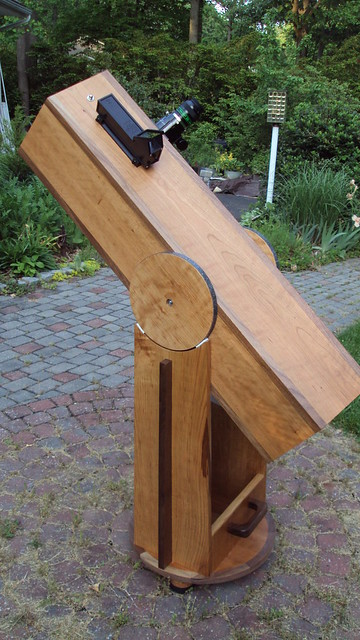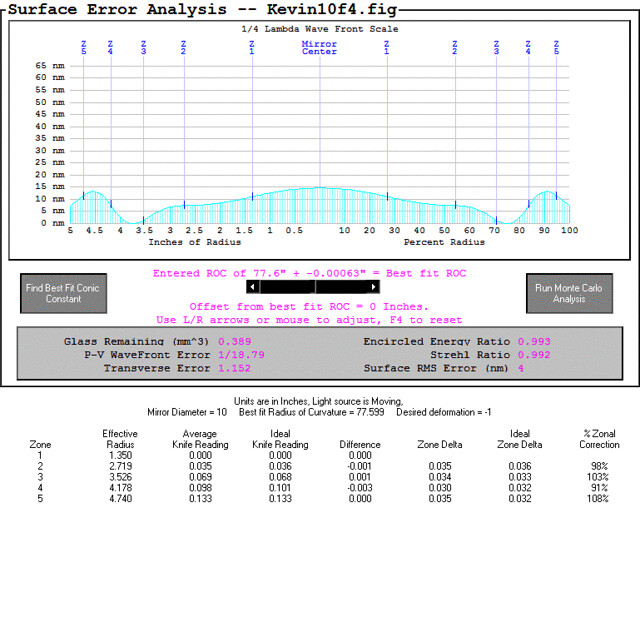10" Cherry Telescope Build
Gordon builds a 10" F4 cherry hardwood telescope for a friend
I have many friends that I've met through my local astronomy group, S*T*A*R Astronomy. One of them hired me to build a 10" F4 telescope, doing both the mirror and the body. He wanted a nice scope, so we decided to build the whole thing from cherry hardwood instead of plywood. This is the kind of project that I love!
The project started with a trip to Willard Brothers to pick out some cherry boards. I was able to find a good number with nice figure on them, so those came into my shop, were thicknessed on the planer, and cut to rough length. These boards would become the flats on the tube, and the base and mount pieces. For the tube, I wanted a unique look. My father-in-law gave me some beautiful walnut boards that he had harvested from his own rural property. I used the darker walnut to accent the joints in the hex-shaped tube.
The little telescope is actually a pretty standard design, as you can see from the photos. The base has hockey-puck feet, and turns on Ebony Star and Teflon bearings. There is more Ebony Star on the altitude bearings. I put in some stiffeners on the sides of the base, along with front and rear panels to smake sure the structure is stable. The handle on the base is another piece of walnut for a little contrast.
I even made the spider myself for this little telescope. I used thin strips of spring steel, cutting them to size and screwing them onto a little triangular block. The inside of the tube is fully lined with black velvet. The mirror cell was made from cherry as well. It is designed to be moveable within the tube, so you can change where the focal plane falls in the focuser tube without any trouble. The knobs were hand made from little scraps of cherry left lying around. We topped off the telescope with a wonderful Starlight Feather Touch focuser, which is just a perfect match for the fast mirror.
For the mirror, you'll see the FigureXP surface analysis in the images at right. Using data from the Foucault test, FigureXP rates the telescope mirror at a bit better than 1/18th wave, P-V on the wavefront. The Strehl ratio is calculated at 0.992, although both of those numbers are optimistic with FigureXP. When I tested this telescope, I used a Paracorr, which corrects for spherical aberration. With the Paracorr in there, the telescope delivers pinpoint images from edge to edge. And the wide field of view makes hunting for those DSO's very pleasant.



